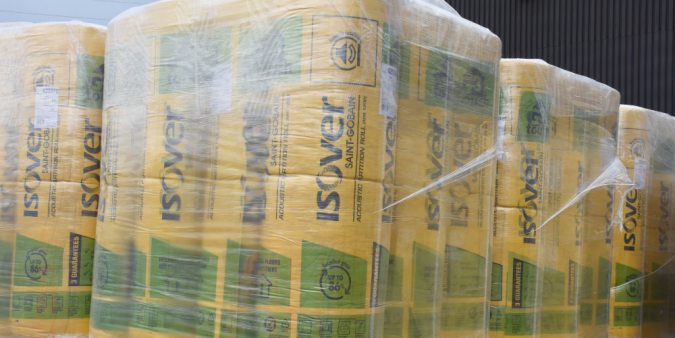Why you should get involved in choosing your materials
Most self-builders aim to be in the driving seat for the majority of their build journey, but may not feel qualified to make decisions regarding the building materials used to construct their home. The knowledge of an architect or designer can support these decisions, however becoming more involved in choosing your materials will bring various benefits once you've moved into your home. This is why we have taken the time to provide some answers for any curious individuals who may question why you should get involved in choosing the right materials for your home.
Fabric First Approach
Before we begin filtering down the benefits, we believe an outline of the fabric first approach provides some quality groundwork. In its simplest form, this approach involves considering the design and construction of your self-build, using high performing materials, air tightness and ventilation to minimise the energy needed to heat and cool your home. This can then reduce or remove the need for technology such as solar panels, as your build design will be naturally efficient and comfortable with low energy requirements.
Each factor we mention in this post are all under the umbrella of this fabric first approach, hopefully showing that by choosing the right materials for your self-build, it not only maximises the material performance, but also the overall efficiency of your home.
So let’s begin.
Reduce Running Costs
There are a number of ingenious ways you can design your self-build to reduce the overall running costs, and similarly, in the case of choosing materials, the right decision can provide large reductions to costs of running your home.
If you choose to become involved in the construction of your build, selecting certain materials at this early stage that are well insulating, maintain airtightness and avoid thermal bridging can allow you to build a home that costs almost nothing to run. You could even choose to build to Passivhaus standard which is an industry recognised, low energy design standard that provides high levels of occupant comfort as well as reducing energy use and carbon emissions from the building.
On a similar note, you could even build to Saint-Gobain’s Multi Comfort standard, which as well as meeting the Passivhaus standards, will maximise your visual, thermal, acoustic and indoor air comfort to enhance occupant wellbeing.
Eco-Friendly
On a planet experiencing ecological turmoil and climate emergencies, the need for eco-friendly homes has never been so paramount. And with respect to the decisions we make during a self-build, this factor may be one of the most important and most relevant for our future. There are a number of examples to support an eco-friendly home, but we’ll filter them down to provide an outlook on the available possibilities.
Our first example involves using an insulated timber frame system. These systems allow you to build off-site at a rapid rate with precision using factory-fitted insulation. This in turn provides low-carbon construction and can also be designed to increase passive solar gain, resulting in a highly sustainable home for years to come.
Even more natural systems can include hempcrete or even straw bales. Both can be challenging methods to use, but the sustainability of these natural systems is very high. The use of waste products reduces any environmental impact, and also allows you to use recycled materials to construct your home. Depending on how ecologically friendly you’d like your home to be, these natural systems could provide a sustainable option.
Energy Efficiency
An energy efficient home can be easier to achieve than you think. By moulding your build around a fabric first approach, this allows you to maximise the energy performance of each specific material. And it is this type of methodology that can also support the Passivhaus standards.
To increase air tightness, recommended methods include Timber Frame, Structural Insulated Panels (SIP) or Insulated Concrete Formwork (ICF). All of which require a mutual connection with high-quality insulation, because without enough insulation your home starts to loose heat instead of retaining it.
Another consideration to help benefit the efficiency of your build is the use of double or triple glazing; triple glazed windows may be the more expensive option here, but they can help a building to retain more heat. However not everyone can stretch a budget, so argon or crypton filled double glazing can be a great alternative to maximise your solar gain.
Speed Up the Journey
The dream of a self-build can be an arduous process, but by choosing specific materials you can create a more efficient process to reduce the build time. Thin-joint construction is a great example of this. It uses a 2mm mortar joint that reaches full strength at a rapid rate alongside aircrete blocks that can be cut and adjusted on-site. Compared to traditional brick and block techniques that use a 10mm mortar joint, the thin-joint technique largely reduces the build time, constructing a well-insulated wall in just one day.
Other concepts to cut down the build time can involve insulated concrete formwork (ICF) for a well-insulated yet easy-to-erect wall structure, or you could even aim for a more minimalist journey through simplistic block building such as the use of shipping containers.
Creating a home tailored to you
Choosing the right materials is not only about improving your home, but also about using your own knowledge to create a home better tailored to your taste, requirements and wellbeing.
Check out our materials guides here for a more in-depth look at some of the main specific products areas to decide upon.
Product Guides
Check out our product guides for a more in depth look at plasterboard, timber, roof shape and insulation.

Quantity Calculators
Before you order, why not get a little help with our handy Quantity Calculators to help measure how many tiles, bricks or blocks you need to order for your project?

